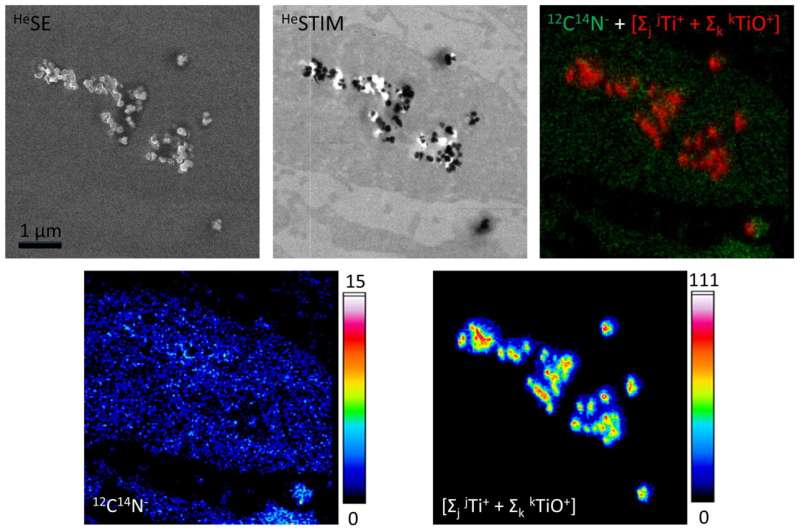This article has been reviewed according to Science X's editorial process and policies. Editors have highlighted the following attributes while ensuring the content's credibility:
fact-checked
peer-reviewed publication
proofread
Titanium dioxide: E171 first enters the blood via the mouth

E171, a food additive, has been used until recently as a whitening and opacifying agent in many products such as pastries, sweets, sauces and ice cream. It is composed of micro- and nanoparticles of titanium dioxide, or TiO2.
The scientific community has been scrutinizing these titanium dioxide nanoparticles. Previous studies on animal models have shown that they can cause the appearance of pre-cancerous cells in the colon among other effects in the body. On the basis of the precautionary principle, the use of E171 in food has been banned in France from 2020. All of Europe followed suit in 2022.
Once ingested, nanoparticles accumulate in the liver and spleen after absorption from the intestine, but also in the placenta, until they contaminate the fetus. Scientists then wondered if there were other routes of exposure of the body to these nanoparticles.
To answer this question, researchers from INRAE, in collaboration with the LNE (Laboratoire National de métrologie et d'Essais, Paris), studied its absorption by the buccal cavity. They first studied their passage through the mouth of pigs (histologically very similar to that of humans), then the effect of the nanoparticles on human buccal cells in culture.
Under these conditions, in vivo and in vitro respectively, tests show that they are indeed rapidly absorbed. Once absorbed, they damage the DNA of the cells by subjecting them to oxidative stress, affecting the survival of growing cells, an effect that may affect the renewal of the oral epithelium.
These results not only confirm that these nanoparticles pass through the oral mucosa to reach the bloodstream, thus well before their absorption in the intestine, but also that they can affect cell regeneration within these same mucosa.
This work highlights the importance of taking into account direct exposure of the oral cavity to the food additive E171 when assessing risks to humans, both when used in food products and in cosmetics (particularly toothpaste) and pharmaceuticals.
E171 is used as a white food coloring and opacifying agent. It is still used in pharmaceutical preparations and toothpastes, and outside Europe in food. In this study, scientists tracked TiO2 particles using electron microscopy coupled with titanium spectrometry. They also used the "nanoparticle-scope", an innovative technology to map their distribution in tissues at the nanometer scale.
The work is published in the journal Nanotoxicology.
More information: Julien Vignard et al, Food-grade titanium dioxide translocates across the buccal mucosa in pigs and induces genotoxicity in an in vitro model of human oral epithelium, Nanotoxicology (2023). DOI: 10.1080/17435390.2023.2210664
Journal information: Nanotoxicology
Provided by INRAE - National Research Institute for Agriculture, Food and Environment





















